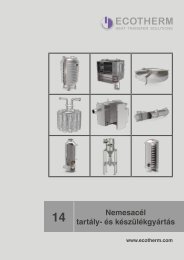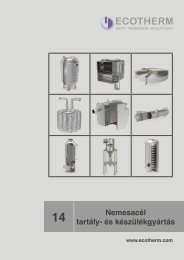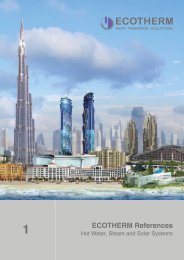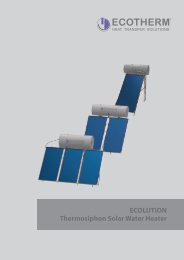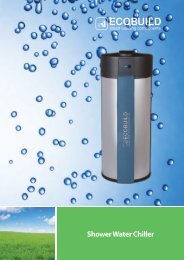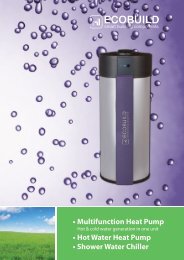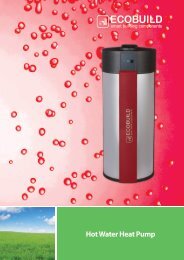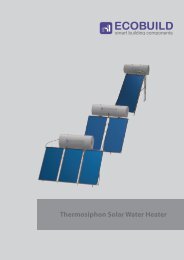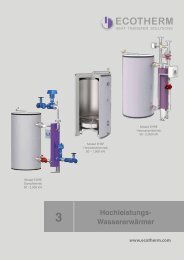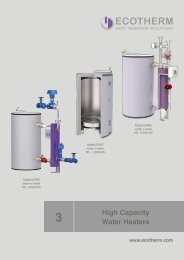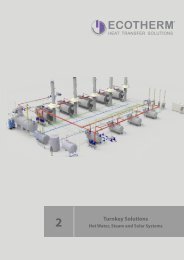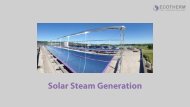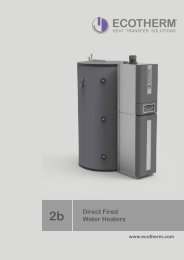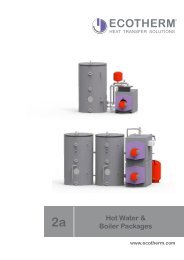BRO Steam Solutions
You also want an ePaper? Increase the reach of your titles
YUMPU automatically turns print PDFs into web optimized ePapers that Google loves.
Products: Water Treatment<br />
Reverse Osmose Systems<br />
The plant consist of:<br />
• High pressure membranes mounted on a<br />
stainless steel base frame<br />
• Checkvalve feedwater<br />
• Checkvalve cleansystem<br />
• Pressure switch as dry-run-protection<br />
• High pressure pump<br />
• Polysulfon/polyamid-membrane<br />
• Pressure gauges<br />
• Concentrate-, accumulation- and backflowvalve<br />
made of stainless-steel<br />
• Flowmeter permeate, concentrate and<br />
backflow<br />
• Control system with full automatic<br />
monitoring<br />
• Conductivity meter, digital display, operating<br />
hour meter<br />
• Adjustable limit value and alarm contact for<br />
low pressure and conductivity<br />
• Connection for niveau control, adjustable<br />
pressure- and interval flushing<br />
• Storage tanks made of stainless steel or<br />
plastic<br />
Reverse Osmosis is a process that is used to remove a<br />
wide range of salts to provide water of a high purity. Osmosis<br />
is a natural process involving fluid flow across a semipermeable<br />
membrane barrier. It is the process by which<br />
nutrients feed the cells in our bodies and how water gets to<br />
the leaves at the top of trees. Reverse Osmosis systems,<br />
in their basic form, consist of a pressure pump, housing<br />
and the membrane. Water is forced into the housing under<br />
pressure and the pure water (or permeate) is collected and<br />
passed to service.<br />
Reject water (or concentrate) is collected from another outlet<br />
and routed to drain, with a portion of the concentrated<br />
water recycled back to the inlet of the pump. This means<br />
that the portion of water sent to drain is kept to a minimum.<br />
The controller used on the RO system constantly monitors<br />
the quality of the permeate water and is also linked with<br />
safety controls on the system.<br />
RO plants must be supplied with softened, de-chlorinated<br />
or de-chlorinated anti scalent dosed water. A duplex softener<br />
is recommended for continuous operation.<br />
The size of the RO and choice of membrane will be determined<br />
by the permeate quantity required, feed water salinity<br />
and permeate quality expected. Low energy membranes<br />
allow the units to run at pressures around 10 to 13bar, and<br />
as such the pressure booster pumps required to generate<br />
the pure water are smaller, and the power consumption is<br />
reduced significantly.<br />
Additional recommended is also a storage tank which is<br />
used for reception of the pure-water.<br />
The size of this tank / these tanks should be in coordination<br />
with minimum and maximum RO water demand to ensure<br />
constant operation of the RO system.<br />
16 ECOTHERM <strong>Steam</strong> <strong>Solutions</strong>



